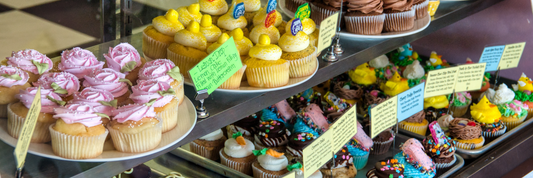Storing coffee properly is essential for preserving its freshness, flavor, and aroma. Whether you're a casual coffee drinker or a coffee enthusiast, understanding the best ways to store coffee will ensure that each cup you brew tastes its best. In this guide, we’ll walk through key tips and techniques for storing coffee to help you enjoy your favorite beverage at its peak.
What is Fresh Coffee
Fresh coffee is defined as whole bean coffee that was roasted within two weeks. It normally reaches its peak flavor potential 48 hours after roasting and can last up to a month.
While freshness is an excellent predictor of your cup's potential character, there are numerous additional elements to consider when achieving the optimal taste experience and optimizing your cup, ranging from coffee processing to roasting to brewing conditions.
Freshness is one of the most important aspects of a great coffee experience. Coffee beans contain natural oils and volatile compounds that give the drink its rich flavor and aroma. Over time, exposure to air, moisture, heat, and light can break down these elements, causing the coffee to lose its vibrancy.
Whole beans vs. ground coffee: Whole beans typically stay fresh longer than pre-ground coffee because they have a smaller surface area exposed to the elements. Once coffee is ground, it begins to lose freshness more quickly, which is why it’s often recommended to grind your coffee just before brewing.
Key Factors That Affect Coffee Freshness
Several environmental factors can lead to stale coffee. Understanding these will help you avoid common mistakes in coffee storage.
- Air: Oxygen is the main culprit behind coffee oxidation, which degrades flavor. Exposure to air can cause coffee to go stale within days.
- Moisture: Coffee beans are hygroscopic, meaning they easily absorb moisture from the air. This can not only affect the flavor but also promote mold growth.
- Heat: High temperatures can speed up the degradation of coffee beans, causing them to lose their delicate flavors.
- Light: Exposure to direct sunlight can also degrade coffee, breaking down the oils and compounds that contribute to its rich taste.
How to Store Coffee Beans
Proper storage techniques are crucial to maintaining coffee's freshness and flavor. Here’s how to store your coffee effectively:
What is the best packaging for coffee?
To keep coffee fresh, it’s essential to store it in airtight containers that minimize exposure to air. Look for containers that seal tightly to protect your coffee from oxygen and moisture.
Coffee storage paper bag sample with customized logo

Block Out Light
Opaque containers are best for storing coffee, as they block out light and protect your beans or grounds from harmful UV rays.
The Importance of UV Resistant Coffee Bags in Preserving Quality and Sustainability
Store in a Cool, Dark, and Dry Place
The ideal location for coffee storage is a pantry or cupboard, away from direct sunlight, heat sources, and humidity. Coffee should be kept at room temperature, not exposed to fluctuating temperatures.
Avoid the Fridge and Freezer for Short-Term Storage
Many people mistakenly store coffee in the refrigerator or freezer. However, this is generally not recommended for short-term storage. The cold environment can introduce moisture to the coffee, and frequent temperature changes can affect its quality. If you need to store coffee for an extended period, freezing can be an option (more on that below).
Consider Vacuum-Sealed Bags
Vacuum-sealed bags are another option for preserving coffee freshness. They work by removing air from the packaging, reducing oxidation. Some coffee comes pre-packaged in vacuum-sealed bags, and once opened, the coffee should be transferred to an airtight container.

How to Store Ground Coffee
- Keep away from the refrigerator:Unlike coffee beans, ground coffee should be kept away from places with high humidity because they can spoil coffee faster. The refrigerator is a place with high humidity so it is not ideal for keeping coffee grounds fresh.
- Check the expiration date of roasted ground coffee on the packaging
Use a glass container with an airtight lid, or a vacuum bag.
Keep ground roasted coffee in a dry place, which will increase the shelf life and quality of the product. - Ground roasted coffee is best used within 7 days from the date of purchase, no matter how well it is stored. If you need to store coffee for a longer time, it is best to buy ground coffee.
- Check the expiration date of roasted ground coffee on the packaging
- Use a glass container with an airtight lid, or a vacuum bag.
- Keep ground roasted coffee in a dry place, which will increase the shelf life and quality of the product.
- Ground roasted coffee is best used within 7 days from the date of purchase, no matter how well it is stored. If you need to store coffee for a longer time, it is best to buy ground coffee.
Myths About Storing Coffee
There are a lot of myths floating around about the best ways to store coffee. Let’s debunk a few:
-
Freezing Coffee: While freezing coffee beans can extend their shelf life, it’s only recommended if you need to store them for more than a month. Always store coffee in an airtight container in the freezer, and thaw it at room temperature before use.
-
Refrigerating Coffee: Many believe that the fridge is a good place to store coffee, but it’s not. Coffee easily absorbs odors from other foods, and the moisture in the fridge can damage its flavor.
-
Using Rice to Absorb Moisture: Some people suggest placing rice in your coffee storage container to absorb moisture, but this can introduce unwanted particles and does not effectively prevent spoilage.
Long-Term Storage Solutions for Coffee Enthusiasts
For those who buy coffee in bulk, long-term storage solutions are necessary to maintain freshness. Here’s how you can store coffee for extended periods:
-
Vacuum-Sealing: For the freshest long-term storage, use a vacuum sealer. This method removes oxygen from the environment, drastically slowing down oxidation.
-
Freezing: If you choose to freeze your coffee, store it in small, airtight portions to avoid repeated exposure to air. Thaw only what you need for a week’s supply.
How Different Coffee Types May Require Different Storage Methods
Different types of coffee may need specific storage considerations. Here are a few tips based on the type of coffee you’re storing:
-
Roasted vs. Unroasted (Green) Beans: Green coffee beans can be stored for a much longer time than roasted beans. They should be kept in a cool, dark, and dry place, and they will remain fresh for up to a year.
-
Flavored Coffee: Flavored coffee can be more sensitive to storage conditions because of the added oils and flavorings. Store it in an airtight container to prevent flavor loss.
-
Decaf Coffee: Decaf coffee can be stored using the same methods as regular coffee. However, it may go stale slightly faster due to the decaffeination process.
How to recognize stale coffee
It’s essential to know when your coffee has passed its prime. Here are a few signs:
- Faded Aroma: Fresh coffee has a strong, pleasant smell. If the aroma is weak or off, your coffee may be stale.
- Flat or Bitter Taste: Stale coffee often tastes dull or overly bitter.
- Loss of Oils: Fresh coffee beans have a shiny, oily surface. When they go stale, they appear dry and lack their natural oils.
While stale coffee isn’t harmful to drink, it won’t provide the rich flavors you’re accustomed to.

Conclusion
Storing coffee properly is a simple way to ensure you always have a fresh, flavorful cup. By understanding the factors that affect coffee freshness—air, moisture, heat, and light—you can avoid common storage mistakes and preserve your coffee’s quality for longer. Whether you prefer whole beans or ground coffee, following these storage tips will help you enjoy the best coffee experience possible.





